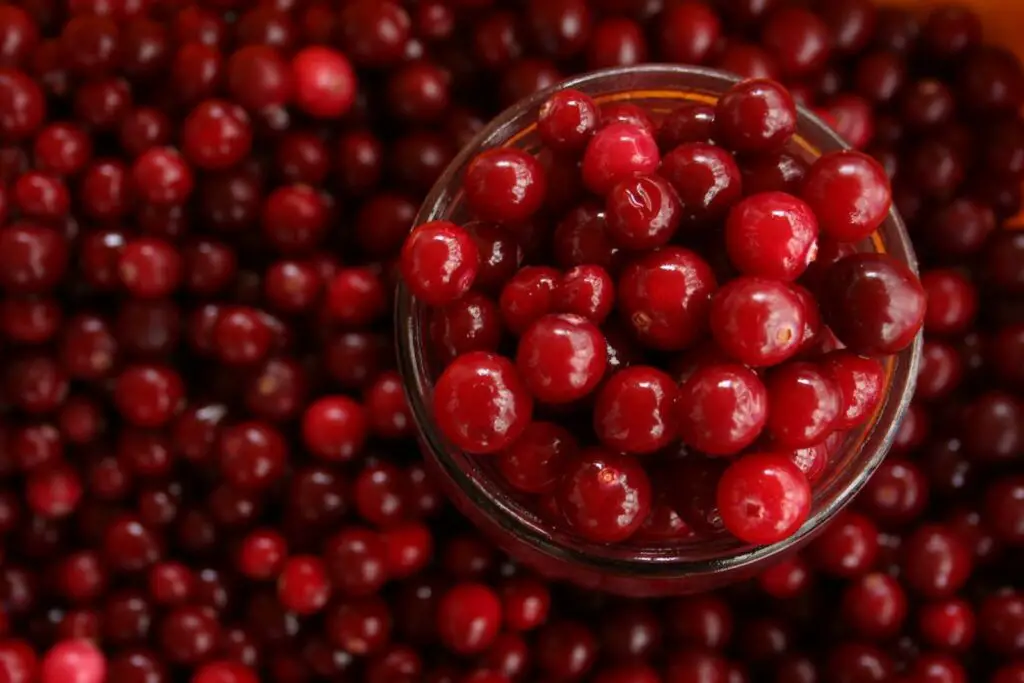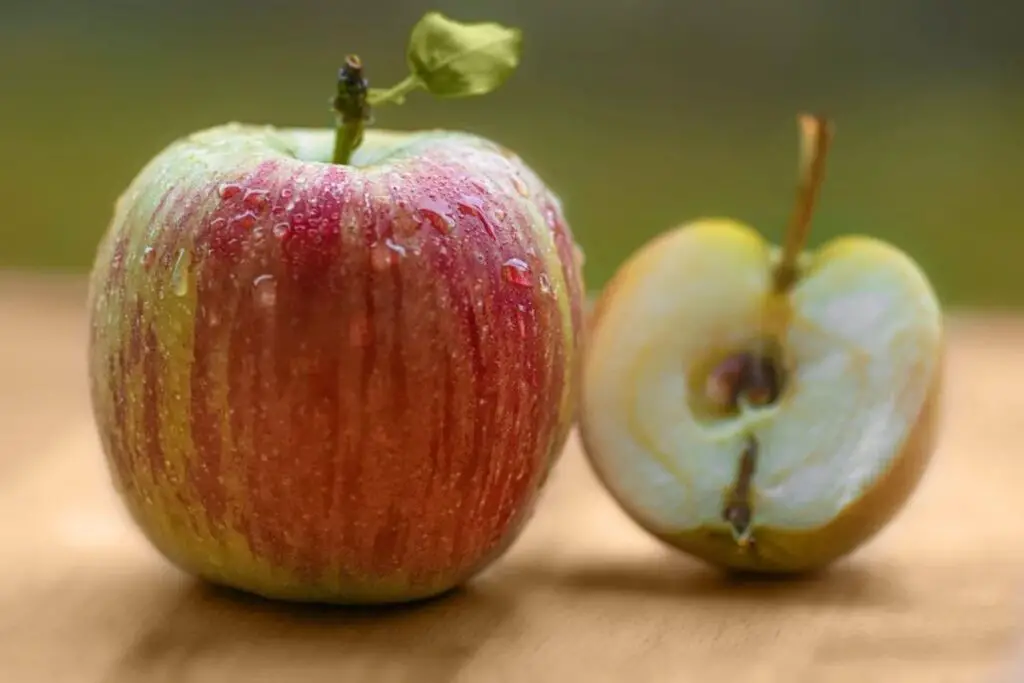
Sweet cherries, with their luscious and juicy flesh, are a beloved and delightful fruit that epitomizes the taste of summer. These ruby-red or golden gems are cherished for their natural sweetness and unique flavor profile, making them a favorite snack, dessert ingredient, and garnish for a variety of dishes. Whether enjoyed fresh by the handful, baked into pies and tarts, or blended into refreshing smoothies, sweet cherries offer a burst of sweetness that brightens up any culinary creation. However, when cherries are in abundance during their peak season or when purchased in larger quantities, it can be challenging to consume them all before they begin to lose their freshness. Freezing sweet cherries becomes a practical and effective method to preserve their juicy goodness and extend their usability, ensuring that each cherry retains its natural sweetness and vibrant color, ready to enhance your recipes with a touch of summer’s sweetness, even when fresh cherries are not readily available or when you wish to savor their delightful taste at your convenience. In this guide, we will explore the best practices for freezing sweet cherries, allowing you to savor their delightful taste and elevate your culinary creations with the essence of these juicy fruits, whenever you desire, without the need for a fresh purchase or harvest from your cherry tree.
Here are the simple steps to freeze sweet cherries:
- Step 1: Choose Ripe and Fresh Sweet Cherries
- Step 2: Rinse the Cherries
- Step 3: Remove the Pits
- Step 4: Optional Sugar Syrup
- Step 5: Coat the Cherries (optional)
- Step 6: Arrange the Cherries on a Baking Sheet
- Step 7: Flash-Freeze the Cherries
- Step 8: Package the Cherries
- Step 9: Label and Date the Packages
- Step 10: Store in the Freezer
Step 1: Choose Ripe and Fresh Sweet Cherries
The success of freezing cherries largely depends on starting with high-quality, ripe, and fresh fruit. Here’s why this step is crucial:
- Optimal Flavor and Sweetness: Ripe sweet cherries are bursting with natural sugars and have reached their peak sweetness. Freezing cherries at this stage ensures that their flavor is locked in, preserving their delicious taste even after thawing.
- Improved Texture: Fully ripe cherries tend to have a firmer and juicier texture compared to under ripe ones. By freezing ripe cherries, you preserve their texture, preventing them from turning mushy or grainy after thawing.
- Maximum Nutritional Value: Ripe cherries are more nutrient-dense, offering a range of vitamins, minerals, and antioxidants. Freezing them at their peak ensures that these nutrients are retained for consumption later.
- Avoiding Spoilage: Choosing cherries that are free from bruises and blemishes reduces the risk of spoilage during freezing. Bruised or damaged cherries can deteriorate quickly and may negatively impact the overall quality of the frozen cherries.
- Uniform Freezing: When cherries are frozen at different stages of ripeness, they may thaw unevenly, resulting in an inconsistent texture and taste. Using uniformly ripe cherries ensures a more consistent end product.
To select the best sweet cherries for freezing, look for those with a vibrant color, whether they’re deep red, bright yellow, or somewhere in between, depending on the variety. They should feel firm to the touch and have a plump appearance. Avoid cherries that are soft, wrinkled, or have moldy spots.
Step 2: Rinse the Cherries
Rinsing the sweet cherries under cold running water, ensuring they are clean and free from any contaminants before freezing. This step may seem straightforward, but it plays a critical role in maintaining the quality and safety of the frozen cherries. Here’s why it’s important to rinse the cherries:
- Removing Dirt and Debris: Sweet cherries, like any fresh produce, can accumulate dirt, dust, or other debris during harvesting and transportation. Rinsing the cherries under running water helps remove these impurities, ensuring that you freeze clean and hygienic fruit.
- Eliminating Residual Pesticides: If the cherries were conventionally grown, they might have been treated with pesticides to protect them from pests and diseases. Washing the cherries helps reduce any traces of these chemicals on the surface, promoting safer consumption.
- Preventing Cross-Contamination: By washing the cherries before freezing, you minimize the risk of introducing bacteria or pathogens from the surface of the fruit into your freezer. Cross-contamination can affect the safety of other frozen items stored in the same space.
- Enhancing Storage Life: Clean cherries have a better chance of staying fresh during freezing. Any residues on the cherries’ surface can lead to spoilage or off-flavors over time. Properly washed and dried cherries have a longer shelf life in the freezer.
Here’s how to rinse sweet cherries effectively:
- Place the cherries in a colander or a sieve: Use a colander or a sieve with small holes to prevent the cherries from falling through while allowing water to pass through easily.
- Run cold water over the cherries: Turn on the cold tap and let the water gently flow over the cherries. Use your fingers to give them a gentle rub while they’re under the water to ensure thorough cleaning.
- Inspect for any remaining debris: While rinsing, keep an eye out for any stubborn dirt or debris that might be clinging to the cherries. You can use a soft brush to gently remove any such particles if needed.
- Pat dry with a clean kitchen towel: After rinsing, carefully transfer the cherries to a clean kitchen towel. Gently pat them dry to remove excess water, as wet cherries can lead to ice crystal formation during freezing.
Taking the time to rinse and dry the cherries properly before freezing ensures that you have clean, fresh, and safe fruit ready to be preserved for future use. This simple yet essential step sets the groundwork for maintaining the quality and taste of the frozen sweet cherries.
Step 3: Remove the Pits
The pits, also known as seeds, are the hard, woody structures found at the center of the fruit. Taking out the pits is essential for several reasons:
- Even Freezing: Pitting the cherries ensures that the fruit freezes evenly. Cherries with pits may freeze at different rates, leading to an inconsistent texture and potentially affecting the quality of the frozen cherries.
- Better Texture: Pitted cherries have a smoother texture, which is more desirable for various culinary uses. It eliminates the risk of accidentally biting into a hard pit, providing a more enjoyable eating experience.
- Convenience: Pit-free cherries are easier to work with in recipes. Whether you’re using them in baked goods, smoothies, or salads, not having to deal with pits simplifies the preparation process.
- Versatility: Pitted cherries are more versatile for a wide range of dishes. They can be used whole, halved, or chopped, depending on the recipe’s requirements.
Here’s how to remove the pits from sweet cherries:
- Using a Cherry Pitter:
- A cherry pitter is a handy kitchen tool designed specifically for removing pits from cherries. Here’s how to use it:
- Place the cherry in the pitter: Position the cherry on the pitter’s base, making sure the stem end faces down and the pointed end of the pit faces up.
- Squeeze the pitter: Gently squeeze the handles of the cherry pitter to push the pit out through the top while keeping the cherry intact.
- Using a Paring Knife:
- If you don’t have a cherry pitter, a paring knife can also do the job effectively. Here’s how to pit cherries with a paring knife:
- Cut the cherry in half: Hold the cherry steady on a cutting board and slice it in half vertically, along the natural crease.
- Remove the pit: Use the tip of the paring knife to carefully lift and remove the pit from each half. Take care not to damage the surrounding fruit.
Whichever method you choose, remember to work slowly and attentively to avoid damaging the cherries or injuring yourself. After pitting the cherries, they are ready to be used in various recipes or frozen for longer-term storage. This step ensures that the frozen cherries are versatile, safe, and easy to use whenever you’re ready to enjoy them.
Step 4: Optional Sugar Syrup
Freezing sweet cherries introduces an optional step to enhance the sweetness of the fruit by using a sugar syrup. Here’s why this step is included and how it can benefit the frozen cherries:
- Enhancing Sweetness: Some people prefer their sweet cherries to be even sweeter, especially if the cherries are not at their absolute peak of sweetness. The sugar syrup adds sweetness, complementing the natural sugars in the cherries and making them more enjoyable for those with a sweeter palate.
- Balancing Tartness: Depending on the variety of sweet cherries and their ripeness, they may have varying levels of tartness. The sugar syrup can help balance out this tartness, creating a more harmonious flavor profile.
- Preventing Discoloration: The sugar syrup can also help prevent the cherries from browning or oxidizing during the freezing process. Oxidation can lead to a change in flavor and appearance, and the sugar syrup acts as a protective coating.
Here’s how to prepare and use the optional sugar syrup:
- Make the Sugar Syrup: In a saucepan, combine equal parts of sugar and hot water. For example, you can use one cup of sugar with one cup of hot water. Stir the mixture until the sugar completely dissolves.
- Allow the Syrup to Cool: Let the sugar syrup cool to room temperature or chill it in the refrigerator before using it with the cherries. Cooling the syrup prevents any residual heat from affecting the texture of the cherries.
- Coat the Cherries: Once the sugar syrup has cooled, you can choose to either toss the cherries gently in the syrup or dip each cherry individually to coat them. Make sure the cherries are evenly coated with the syrup for consistent sweetness.
- Drain Excess Syrup: After coating the cherries, allow any excess syrup to drain off. You don’t want the cherries to be overly saturated with the syrup, as it can lead to a sticky mess during freezing.
It’s important to note that the sugar syrup is entirely optional, and many people prefer to freeze sweet cherries without any added sweeteners to preserve their natural taste. The decision to use the sugar syrup is a matter of personal preference and depends on the level of sweetness you desire.
Step 5: Coat the Cherries (optional)
Which involves coating the sweet cherries with a bit of sugar or using the prepared sugar syrup. The primary purpose of this step is to prevent the cherries from sticking together during freezing. Here’s why this optional coating can be helpful:
- Preventing Clumping: When cherries freeze, they can release some moisture, which may cause them to stick together in clumps if they come into direct contact. Coating the cherries with sugar or syrup creates a barrier between the fruit, reducing the likelihood of sticking.
- Easier Portioning: Coated cherries are easier to handle and portion out when you want to use them from the freezer. They won’t be as sticky, making it simpler to take out the desired amount for your recipe without thawing more than necessary.
- Enhancing Sweetness: If you opted for the sugar syrup in the previous step, coating the cherries with it further enhances their sweetness and flavor, providing a delightful taste to the frozen cherries.
Here’s how to coat the cherries with sugar or syrup:
- For Sugar Coating:
If you prefer not to use the sugar syrup, you can gently toss the sweet cherries in a bit of granulated sugar. Place the cherries in a bowl, add a sprinkle of sugar, and gently toss them until they are lightly coated.
- For Syrup Coating:
If you made the sugar syrup in the previous step, you can use it to coat the cherries. Dip each cherry into the cooled syrup and let any excess syrup drain off.
Remember that this step is entirely optional, and you can skip it if you prefer to freeze the cherries without any added sweeteners. Some people choose to freeze sweet cherries in their natural state without any coating to preserve their authentic taste.
After coating the cherries (if you choose to do so), they are now ready to be arranged for freezing, as outlined in the subsequent steps. This optional coating step adds convenience and a touch of sweetness to the sweet cherries, making them easier to handle and delightful to enjoy later.
Step 6: Arrange the Cherries on a Baking Sheet
The process of freezing sweet cherries involves arranging the prepared fruit in a single layer on a baking sheet. This step is essential for ensuring individual freezing of the cherries, and here’s why it’s important:
- Individual Freezing: Placing the cherries in a single layer on the baking sheet allows each fruit to freeze separately. Individual freezing prevents the cherries from sticking together, ensuring that they remain loose and easy to work with when stored in containers or bags.
- Preventing Clumping: As the cherries freeze, any moisture they release can cause them to stick together if they are in close contact. By ensuring they don’t touch each other during freezing, you reduce the chances of clumping, making it easier to portion and use the cherries later.
- Faster Freezing: Arranging the cherries in a single layer promotes faster and more efficient freezing. When items are packed closely together, it can take longer for them to freeze completely, potentially leading to ice crystal formation and a loss of overall quality.
Here’s how to arrange the cherries on a baking sheet for freezing:
- Prepare a Baking Sheet: Line a baking sheet with parchment paper or a silicone baking mat. The lining will prevent the cherries from sticking to the surface and make it easier to transfer them after freezing.
- Lay the Cherries: Place the prepared sweet cherries in a single layer on the baking sheet, making sure they are spaced out evenly and not touching each other.
- Avoid Overcrowding: If you have a large quantity of cherries to freeze, you may need to use multiple baking sheets or freeze them in batches to prevent overcrowding. Overcrowding can hinder proper freezing and lead to undesirable results.
- Freeze the Cherries: Once the cherries are arranged on the baking sheet, place the sheet in the coldest part of your freezer. Leave them to freeze for about 2 to 3 hours or until they are solidly frozen.
After the cherries are frozen solid, they can be transferred to airtight freezer-safe containers or resealable plastic bags for long-term storage. By taking the time to arrange the cherries properly on a baking sheet, you ensure that they freeze individually, maintain their quality, and remain easy to use for your favorite recipes throughout the year.
Step 7: Flash-Freeze the Cherries
This step is crucial for ensuring that the cherries freeze quickly and efficiently, which helps preserve their texture, flavor, and overall quality. Here’s why flash-freezing is important:
- Rapid Freezing: Flash-freezing involves freezing the cherries at an extremely low temperature, typically much colder than the standard freezer setting. The quick freeze helps to form small ice crystals within the fruit, which is essential for maintaining the cherries’ cellular structure.
- Texture Preservation: Large ice crystals formed during slow freezing can damage the cell walls of the cherries, leading to a loss of texture and juiciness when thawed. Flash-freezing creates tiny ice crystals, reducing the risk of cellular damage and preserving the cherries’ natural texture.
- Preventing Clumping: Flash-freezing the cherries on the baking sheet ensures that they remain separate and don’t clump together. Individual freezing prevents the cherries from sticking, making it easier to handle and portion them when transferring to containers or bags for long-term storage.
- Efficient Freezing: Quick freezing helps lock in the cherries’ flavor and nutrients, ensuring that they retain their taste and nutritional value even after an extended period of freezing.
Here’s how to flash-freeze the cherries:
- After arranging the prepared cherries in a single layer on the baking sheet, place the baking sheet in the freezer.
- Leave the cherries to freeze for about 2 to 3 hours or until they are solidly frozen. The exact freezing time may vary depending on your freezer’s temperature and the quantity of cherries being frozen.
- To check if the cherries are fully frozen, gently touch a few of them with your fingers. They should feel hard and completely frozen.
- Once the cherries are solidly frozen, they are ready to be transferred to airtight freezer-safe containers or resealable plastic bags for long-term storage.
Flash-freezing the cherries as soon as possible after arranging them on the baking sheet is essential to achieve the best freezing results. Remember that the baking sheet method is an effective way to keep the cherries loose and separate during freezing, preventing clumping and facilitating easier portioning when it’s time to use them in recipes or enjoy them as a frozen treat.
Step 8: Package the Cherries
Proper packaging is crucial to maintain the cherries’ quality, prevent freezer burn, and ensure they stay fresh until you’re ready to use them. Here’s why this step is important:
- Preventing Freezer Burn: Freezer burn occurs when air comes into contact with frozen food, causing the surface to dry out and become discolored. By transferring the cherries into airtight containers or bags and removing excess air, you create a protective barrier that minimizes the risk of freezer burn.
- Maintaining Freshness: Airtight packaging helps seal in the cherries’ natural flavor and prevents odors from other foods in the freezer from affecting the taste of the cherries.
- Efficient Use of Freezer Space: Using airtight containers or bags allows you to stack and organize the frozen cherries efficiently in your freezer, making the most of the available space.
Here’s how to package the frozen cherries:
- Prepare Freezer-Safe Containers or Bags: Ensure the containers or bags you are using are specifically labeled as “freezer-safe” to withstand the low temperatures without cracking or becoming brittle.
- Transfer the Cherries: Carefully transfer the flash-frozen cherries from the baking sheet into the containers or bags. If you used multiple baking sheets, you may need to divide the cherries among several containers or bags.
- Remove Excess Air: For bags, gently press down on the bags to remove as much air as possible before sealing. Alternatively, you can use the straw method by inserting a straw into the bag, sealing it almost entirely, and then sucking out the remaining air before sealing it completely.
- Seal Tightly: Seal the containers or bags securely to prevent any air from getting in.
By packaging the sweet cherries in airtight freezer-safe containers or bags and removing excess air, you protect them from freezer burn and maintain their quality for an extended period. Properly packaged frozen cherries can be stored in the freezer for several months, allowing you to enjoy their delightful taste and versatility long after their peak season has passed.
Step 9: Label and Date the Packages
This simple step is essential for effective organization and maintaining the quality of the frozen cherries. Here’s why labeling and dating are important:
- Easy Identification: Labeling the containers or bags with the contents (sweet cherries) allows you to quickly identify what’s inside without the need to open each one. This saves time and prevents potential mix-ups with other frozen foods.
- Tracking Shelf Life: By including the freezing date on the label, you can easily keep track of how long the sweet cherries have been in the freezer. This information is crucial for managing the freshness and quality of the cherries, as frozen foods have a limited shelf life.
- First-In-First-Out (FIFO) Principle: The date on the label enables you to follow the FIFO principle, meaning you should use the oldest frozen cherries first before consuming more recently frozen batches. This practice helps avoid waste and ensures you enjoy the cherries at their best quality.
- Planning and Recipe Preparation: Knowing the contents and freezing date allows you to plan your meals and recipes effectively. You can also gauge how many cherries you have left and when you might need to replenish your supply.
Here’s how to label and date the packages:
- Use a Permanent Marker: Grab a permanent marker to write directly on the containers or bags. Make sure the writing is clear and legible.
- Contents: Write “Sweet Cherries” on each container or bag to indicate the type of fruit inside.
- Freezing Date: Next to the contents, write down the date you froze the cherries. You can use the format “MM/DD/YYYY” (month/day/year) for clarity.
- Additional Information (Optional): If you have different batches or varieties of sweet cherries, you can add extra information to differentiate them. For example, you could write “Bing Cherries” or “Rainier Cherries” if you froze two different types.
- Place the Labels: Position the labels in a visible spot on each container or bag, making sure they are easy to read.
By labeling and dating the packages, you ensure that your frozen sweet cherries stay well-organized, and you can enjoy them at their peak quality. This simple yet essential step allows you to make the most of your frozen cherries and ensures a smooth and enjoyable experience when using them in various recipes or enjoying them on their own.
Step 10: Store in the Freezer
Where you store the sealed containers or bags of sweet cherries in the freezer for long-term preservation. Proper storage is essential to maintain the quality, flavor, and nutritional value of the cherries over an extended period. Here’s why storing them correctly in the freezer is crucial:
- Maintaining Frozen Temperature: Placing the sweet cherries in the coldest part of the freezer ensures that they freeze quickly and stay at a consistent low temperature. A stable freezing environment helps preserve the cherries’ texture, taste, and nutritional content.
- Preventing Thawing: Storing the cherries away from the freezer door or other warm areas reduces the risk of temperature fluctuations. Frequent thawing and refreezing can compromise the cherries’ quality and lead to freezer burn.
- Long-Term Preservation: When stored properly in the freezer, sweet cherries can maintain their quality for several months. This allows you to enjoy them well beyond their natural growing season.
Here’s how to store the sweet cherries in the freezer:
- Find the Coldest Spot: Locate the coldest part of your freezer, typically near the back or bottom, as these areas experience the least temperature fluctuations.
- Place the Containers or Bags: Carefully arrange the sealed containers or bags of sweet cherries in this cold spot. Ensure they are stable and won’t be easily knocked over or crushed by other items in the freezer.
- Don’t Overcrowd: Avoid overcrowding the freezer space, as proper air circulation is essential for maintaining a consistent temperature and preventing the buildup of ice crystals.
- Close the Freezer Door: Once you’ve placed the sweet cherries in the freezer, close the door securely to maintain the freezing temperature.
By storing the sweet cherries properly in the coldest part of the freezer, you ensure that they remain in excellent condition and are ready to use whenever you want to enjoy their delicious flavor. The frozen cherries can be used in a variety of recipes, such as desserts, smoothies, and salads, allowing you to relish their taste long after their peak season has passed.
Other related questions
How do you defrost sweet cherries?
To defrost sweet cherries, transfer the frozen cherries from the freezer to a bowl. Allow them to thaw in the refrigerator for several hours or overnight. For a quicker method, place the sealed bag of cherries in a bowl of cold water for about 30 minutes, changing the water every 10 minutes until fully thawed.
Can you refreeze sweet cherries?
Yes, you can refreeze sweet cherries, but it’s not recommended as it may affect their quality. When cherries are thawed, their texture and flavor can be compromised, and refreezing can lead to further deterioration. It’s best to consume the thawed sweet cherries or use them in recipes immediately after thawing to enjoy them at their best.
How do I know if the sweet cherries have gone bad after being frozen?
To determine if frozen sweet cherries have gone bad, look for signs of freezer burn, such as dry, discolored, or shriveled areas on the fruit’s surface. If the cherries have an off-putting odor or a strange taste, they may have deteriorated. Additionally, the presence of mold or unusual texture changes, such as extreme mushiness, are indicators of spoilage. When in doubt, it’s best to discard any frozen cherries that appear or smell abnormal to ensure food safety.
Can you freeze sweet cherries with added herbs, spices, or seasoning for extra flavor?
Yes, you can freeze sweet cherries with added herbs, spices, or seasoning to enhance their flavor. Before freezing, ensure the cherries are pitted and thoroughly washed. Toss them with the desired herbs, spices, or seasoning, and then store them in airtight containers or freezer bags for best results. The addition of flavorings can create delicious variations when using the frozen cherries in recipes like desserts, sauces, or smoothies.
Are there any differences in freezing techniques for sweet cherries compared to other types of cherries?
Sweet cherries, like other types of cherries, can be frozen using similar techniques. However, sweet cherries are typically larger and juicier, making them more delicate during freezing. To maintain their quality, it is advisable to remove pits and spread them in a single layer on a baking sheet before transferring them to a freezer-safe container, as this helps prevent clumping and preserves their individual shape.
Are there any alternatives to traditional freezing methods for sweet cherries, such as using dry ice?
Yes, dry ice is an alternative method for freezing sweet cherries. Dry ice, which is solid carbon dioxide, can achieve extremely low temperatures and rapidly freeze the cherries, reducing the formation of ice crystals and preserving their texture and flavor. However, caution must be exercised when using dry ice, as it releases carbon dioxide gas, requiring proper ventilation and handling procedures to avoid any potential hazards.
Can I freeze sweet cherries that are already slightly overripe?
Freezing slightly overripe sweet cherries is possible, but there may be some differences in texture and flavor compared to freezing perfectly ripe cherries. Overripe cherries might become softer and lose some of their firmness during freezing. However, they can still be used in smoothies, sauces, or baking where the texture changes are less noticeable, ensuring minimal waste of the fruit.








